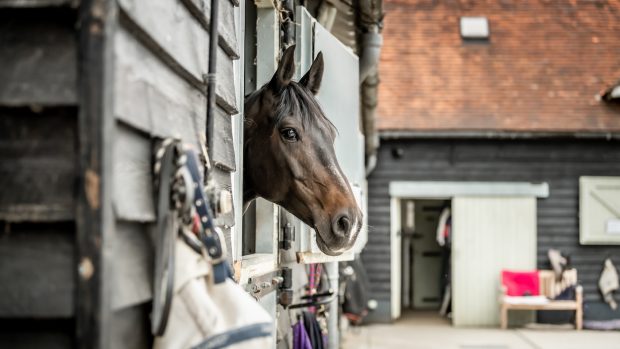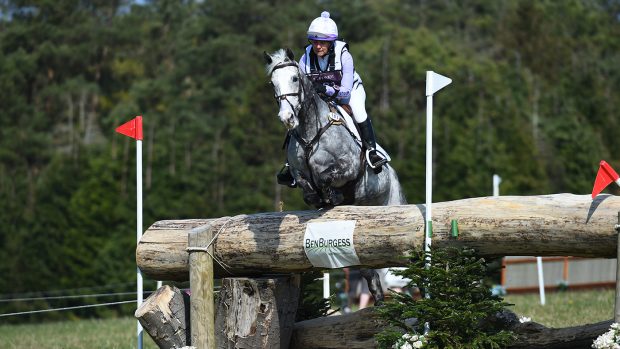We may take for granted the wide range of equestrian terms we have become familiar with over the years. Therefore, it isn’t surprising when someone completely non-horsey conjures up their own term for equestrian activities and equipment.
However, on reflection perhaps their interpretation of horsey terms isn’t silly after all — they do exactly what they say on the tin (well more or less). Here’s some examples…
1. Brushing boots
Used to protect a horse’s legs during exercise, protecting the lower leg from injury.
Translated to: shin pads
2. Bandages
A type of wrap used on the lower legs of a horse.
Translated to: leg warmers/socks
3. Bridles/headcollars
Headgear placed around the head of a horse that holds the bit in place in a horse’s mouth, including reins, used to direct and guide the animal or a device placed on the head of an equine for the primary purpose of leading or tying the animal.
Translated to: hats
4. Anti-rub vest
A piece of clothing worn by the horse to prevent hair removal as a result of a rug rubbing their shoulders.
Translated to: horse bra
5. Clipping
Trimming the hair short on all or part of a horse, particularly during the winter so that a horse can exercise without getting too warm as a result of its winter coat.
Translated to: shaving
6. Cooler rug
A thin blanket, sometimes with many small holes in it to help a horse gradually return to its natural temperature after exercise.
Translated to: string vest
7. Cross-country
An endurance test requiring the horse to jump solid obstables.
Translated to: the fast bit
8. Dressage
An equine sport based on classical principles of horsemanship, involving reproducing set movements designed to gauge the training level of horses.
Translated to: the dancing bit
9. Feather
Long hair on the lower legs of horses.
Translated to: horse trousers
10. Field shelter
A structure with one open side and a roof, often made of wood, located in the field which a horse can stand in to avoid wind and/or rain.
Translated to: cabin
11. Fly mask
A piece of headgear worn by the horse to prevent flies disrupting them.
Translated to: blindfold/helmet
12. Girth
Wide, flat strap used to secure the saddle to the horse.
Translated to: belt
13. Hands (hh)
A measurement of the height of a horse (one hand is equal to four inches).
Translated to: 13.7hh/16.5hh and so on
14. Haynet
A vessel in which hay is stuffed for horses to eat from.
Translated to: hay bag/straw bag
15. Jodhpurs
Full-length trousers worn for horse riding, which are close-fitting below the knee and have reinforced patches on the inside of the leg.
Translated to: jodpoppers/yompers
16. Jump-off
An extra round in a showjumping competition when two or more horses are equal first, the fastest round deciding the winner.
Translated to: the show-off
17. Lycra hood
A piece of equipment the horse wears used to keep their neck and head clean.
Translated to: balaclava
18. Martingale
A piece of tack that is used on horses to control head carriage.
Translated to: horse necklace
19. Numnah
A saddle pad used beneath the saddle to protect the horse’s back.
Translated to: numnum, mumrah
20. Reins
An item of horse tack, used to direct a horse or other animal used for riding or driving.
Translated to: handles
21. Rubber overreach boots
A type of protective boot worn on the lower limb of a horse to protect the bottom of their legs and hooves.
Translated to: flip flops
22. Rug
A blanket intended for keeping a horse warm or otherwise protected from wind and the elements.
Translated to: coat/horse jacket/hoodie/mac
23. Saddle
A device placed on the back of a horse where the rider sits.
Translated to: seat
24. Showjumping
The competitive sport of riding horses over a course of fences and other obstacles in an arena, with penalty points for errors.
Translated to: the high jump
25. Stable rug
A blanket used to keep the horse warm in the stable.
Translated to: pyjamas
26. Stirrups
Paired small light frames or rings for receiving the foot of a rider, attached to the saddle by a strap, called a stirrup leather. Used to aid in mounting and as a support while riding.
Translated to: pedals/foot pegs
27. Travel boots
A type of boot used on the lower legs of a horse to protect the animal while travelling.
Translated to: Ugg boots/wellies
28. Working trot
The natural trot of the horse when under saddle. It is a gait between the collected trot and medium trot.
Translated to: walking trot
- To stay up to date with all the breaking news throughout London International and more, subscribe to the Horse & Hound website
You may also be interested in:

Subscribe to Horse & Hound magazine today – and enjoy unlimited website access all year round





